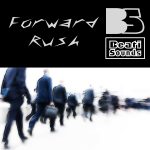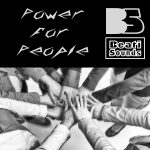Recent posts: beati
Everything you need to know about digital audio files
Don’t know the difference between lossy and lossless? What’s the deal with bit rates? Let us explain.
If you use iTunes or if you buy and download digital music, you’ll have come across a number of terms and abbreviations that describe digital audio files. This alphabet soup can be quite confusing. What are codecs or audio file formats? What is a bit rate, and what’s a sample rate? What does it mean when music is “high-resolution?” When you buy a CD, the audio on the disc is uncompressed. You can rip (or import) CDs with iTunes or other software, turning the CD’s audio into digital audio files to use on a computer or a portable device. In iTunes, you can rip in two uncompressed formats: WAV and AIFF (other software allows for other formats). Both formats simply encapsulate the PCM (pulse-code modulation) data stored on CDs so it can be read as audio files on a computer, and their bit rate (you’ll learn what the bit rate is below) is 1,411 kbps.
WAV and AIFF files can be quite large. As such, digital audio files are compressed to save space. There are two types of compression: lossless and lossy. Lossless includes formats (or codecs, short for coder-decoder algorithms) such as Apple Lossless and FLAC (the Free Lossless Audio Codec). Lossy includes the ubiquitous MP3 and AAC formats. (AAC, which stands for Advanced Audio Coding, is, in reality, the MP4 format, the successor to the older MP3. While Apple adopted it early on in iTunes, Apple was not involved in its creation, and has no ownership of this format.)
You may see other audio formats too, though they are less common. These include Ogg Vorbis, Monkey’s Audio, Shorten, and others. Some of these codecs are lossy, and some are lossless. However, if you use iTunes and Apple hardware, you’ll only encounter WAV, AIFF, MP3, AAC, and Apple Lossless, at least for music.
iTunes can rip or import audio files in these formats. Choose the one you want to use in iTunes > Preferences > General > Import Settings.
When you rip or convert an uncompressed audio file to a lossless format, and then play that file, it is a bit-perfect copy of the original (assuming the data was read correctly from a CD). As such, you can convert from one lossless format to another with no loss of quality.
When you rip to a lossy format, however, if you convert the file later to another format, you lose some of its quality. This is similar to the way a photocopy of a photocopy doesn’t look as good as the original.
Some people prefer lossless formats because they reproduce audio as it is on CDs. Lossy compression is a compromise, used to save space, allowing you to store more music on a portable device or hard disk, and making it faster to download. However, most people can’t tell the difference between a CD and a lossy file at a high bit rate, so if you’re ripping your music to sync to an iPhone, lossless files are overkill.
Lossless rips are a good way to make archival copies of your files, since you can convert them to other formats with no loss in quality. And you can have iTunes convert them automatically to AAC files when you sync. See this article for more on this automatic conversion, as well as other questions about lossless files.
The best way to judge the quality of an audio file—relative to its original, not to its musical or engineering quality—is to look at its bit rate. Audio file bit rates are measured in thousands of bits per second, or kbps. I mentioned above that a CD contains audio at 1,411 kbps, and when you convert that audio to a lossy file, its bit rate is much lower.
A higher bit rate is better, so a 256 kbps MP3 or AAC file is better than a 128 kbps file. However, with lossless files, this isn’t true. The bit rate of a lossless file depends on the density and the volume of its music. Two tracks on the same album, ripped to a lossless format, may have bit rates of, say, 400 kbps and 900 kbps, yet when played back, they both reproduce the original audio from CD at the same level of quality. Lossless compression uses as many bits as needed, and no more.
If you’re ripping music to a lossy format, it’s good to choose the iTunes default of 256 kbps, unless you need to cram a lot of music onto your portable devices. If you’re ripping audiobooks or other spoken word recordings, you can use much lower bit rates, since the range of the human voice is quite narrow. Audiobooks are often ripped at 32 kbps, and they sound fine.
High-resolution audio, once a niche format, has gotten a lot of press recently. Neil Young’s beleaguered PonoPlayer raised awareness of this type of digital audio. Strictly speaking, high-resolution audio is distributed in files that are “better” than CD quality. High-resolution audio is defined by certain numbers: the bit depth of files, and their sample rate.
CDs contain 16-bit audio at a sample rate of 44,100 Hz. So high-resolution audio has a bit depth and/or sample rate that exceeds that of the CD specification (known as the Red Book standard). Much high-resolution audio is 24-bit, 96 kHz, often abbreviated as 24/96. Some companies sell files at 24/192 and 24/384. And there are also several types of DSD (direct-stream digital) files, which use a different recording method. DSD is used on SACDs, or Super Audio CDs, a format designed by Sony and Philips that is pretty much deceased.
iTunes showing information about a high-resolution audio file. You can see that the bit rate is much higher than for a standard lossless file. What iTunes calls the sample size is the bit depth.
When we talk about bits in high-resolution audio, we’re not looking at the bit rate, which I discussed above, but the bit depth. This is the number of bits in each sample, and it mostly affects dynamic range, which is the difference between the softest and loudest parts of the music. (Though, as you can see in the screenshot below, the actual bit rate of a high-resolution audio file is much higher than that of a CD or of a file ripped in a lossless format.)
A good example of music with a very broad dynamic range is Mahler’s third symphony. Listen to the final movement, and you’ll hear some very soft sounds as well as an extremely loud crescendos. Or listen to Led Zeppelin’s “Stairway to Heaven;” it starts with a soft acoustic guitar and builds up to a fuzz-box finale.
A higher bit depth allows music to have a wider range of volume from its softest to loudest passages. But with a lot of contemporary music, the volume of the music is “compressed” to make it louder. (This is dynamic range compression, not the compression used to make files smaller.) So you don’t hear much of a difference with that type of audio if the bit depth is higher.
The sample rate is the number of “slices” of audio that are made per second, and are measured in Hz (Hertz). 44,100 Hz means that the music is sampled 44,100 times a second; 96 kHz means it is sampled 96,000 times a second. The sample rate affects the overall fidelity of music, but also the range of frequencies that can be reproduced. Files sampled at 44,100 Hz can reproduce up to about 20 KHz, or the highest frequencies that humans can hear. High-resolution files can reproduce sounds above that frequency, sounds that humans cannot hear at all. (And extremely high sample rates, such as 192 kHz, may even result in distorted sound.)
Better numbers don’t mean that the music necessarily sounds better. To many people, high-resolution audio is simply a marketing ploy, a way of getting listeners to buy their favorite music in yet another format. It is conceivable that people with very expensive stereos in rooms treated to provide excellent sound may hear the difference, but those one percent of music listeners shouldn’t sway others into buying music that doesn’t sound any different. And when you’re listening on a portable device, the quality of your headphones, and the ambient noise, ensure that you certainly won’t hear anything different.
All this makes it seem like listening to music should depend on numbers. But it shouldn’t. Listen to the music you like, in the format that’s most convenient, on the device you want to play it. It’s great to have better headphones and speakers, but great music can cut through all the fancy hardware and move you no matter how you listen to it.
The future of audio technology (Wireless, noise cancellation, bone conduction and acoustics)
The ways in which we have experienced music, and how it has been recorded and consumed, have changed dramatically, and different formats have created some pretty iconic pieces of paraphernalia over the years. These have come to represent specific eras in the past century: think of the gramophone, vinyl, cassette tapes, compact discs and the rise of digital music, MP3 and now dedicated streaming services.
The devices used to translate these formats into sounds that we can enjoy on a daily basis have also transformed. The apparatus hasn’t really changed in idea (headphones and speakers still remain the standard way of consuming music personally), but the technology that goes into them, and the shapes they have taken, are in a constant state of development.
But what’s around the corner? Now that digital music is here for the foreseeable future, we can expect that all kinds of audio, whether music, e-books or telecoms, will become more versatile and mobile.
Two of the most prolific recent advances in audio technology, at least from a hardware point of view, are noise-cancellation and wireless connectivity in professional and consumer headphones and earphones. These technologies have become commonplace over the past five years or so in the way people listen to music or use audio devices to communicate. Bluetooth has only recently reached a level where it is considered by OEMs as good enough to carry quality audio and replace wires completely, thus paving the way for a throng of cable-free cans.
We are now also starting to see noise-cancellation features in these wireless devices to offer the best of both worlds, allowing users to block out external, unwanted sounds and concentrate solely on the music without being tied to a device. Still, at the moment, a bog standard set of earphones that the average person buys from Amazon, for example, will still most likely be wired. This is going to be one of the first big changes in audio technology in the coming years.
Take the recent revelation that Apple will eliminate the headphone jack from the next iPhone, rumoured as the iPhone 7. According to speculation, Apple will get rid of the 3.5mm headphone jack that has been standard on iPhones and other devices for years, replacing the included earbuds with those that plug in through the Lightning port. This will mean that users wanting to buy their own earphones will have to opt for a Bluetooth wireless variety, thus pushing the growth of wireless buds as third parties rush to give iPhone users alternative options.
WiFi speaker systems are already popular with music enthusiasts. Championed by the likes of Sonos, Bose and Raumfeld, WiFi systems offer seamless integration of stereo, home cinema system and other amplified audio devices with no rewiring or complex programming. Sonos Bridge, for example, lets you connect your wireless router and link all your Sonos players with one touch. The music can then be played from any mobile device in the house through as many players as you want simultaneously.
As history dictates, when predicting the future of audio technology it’s a good idea to look at the best available and use that as an example to see what mass market devices might look like in 10 or even 20 years’ time.
Take Sennheiser and its Orpheus project. The German audio firm created a pair of headphones in 1991 that quickly became known as the best that money could buy. The Orpheus HE90 headphones were made from the best materials available at the time and came with an amplifier. They cost a whopping £10,000.
Almost 25 years later, Sennheiser decided to bring this idea into the 21st century, again using the best materials money could buy, to design a new version of Orpheus, creating the Orpheus HE1060, which the firm again calls “the world’s best headphones”.
The Orpheus system is built into a big slab of marble, and needs to be seen to be believed. Equipped with unique features and state-of-the-art technology, these headphones transform music from something you listen to, into something you feel part of. And at £35,000, you’d want them to.
One of the main features that Sennheiser’s engineers worked on to make these headphones the best in the world was improving audio quality to such a level that they offer an experience like no other: recorded music that sounds like it’s being played live in front of you.
“We found that with the right materials, we got the best transducers from current to sound pressure, so it is the best in the world,” explained Orpheus product manager Axel Grell. “When you measure its frequency response, it works from close to zero kilohertz to over 100kHz and there is no other transducer in the world that can do that.”
Distortion, the unwanted tones in music playback that were not in the original signal, is something Senheiser has worked tirelessly to eradicate when building Orpheus in order to enhance sound quality to a level not heard before.
“When you measure normal speakers, even those made for studio recordings, when they produce sound pressure levels of 100db, they are in the range of one percent distortion. Our transducer, when it produces sound pressure levels of 100db, has 0.1 percent distortion, that’s 100 times less than studio speakers,” added Grell.
“The lower the level of distortion, the more details in the music are audible, so this is the reason why we made Orpheus: to bring distortion to such a low level so when you listen to music you can hear all the details.”
Distortion reduction is just one of many innovative ways Sennheiser is showcasing the technology in Orpheus to demonstrate how it can improve audio and thus pave the way for advances in the future. However, Grell said that it could be 25 years or so before we see technologies like this in mass market devices. Nevertheless, he predicts an expectation among consumers for very high sound quality in headphones and speakers, and that it will become a trend in the coming years with mass audiences who will expect music to have greater clarity and less distortion.
“Quality will play a bigger role in headphones and speakers and in production as consumers opt for better quality sound recordings,” predicted Grell. “This will be a trend, and it has started already, but the next step will be better wireless devices based on Bluetooth, which could see better quality sound and battery life.”
Another upcoming technology that completely turns audio tech as we know it on its head is the concept of listening to music from a part of the body that isn’t the ear. This might sound impossible, but bone conduction technology aims to give music fans the ability to listen to a recording privately and keep an ear on the world around them at the same time. Few have attempted to tackle the technology so far. But a startup called Studio Banana Things has had a go with a project entitled Batband, which the firm describes as “a high fidelity acoustic experience via an innovative bone conduction system”.
Batband looks like a set of headphones but without the ear cans. A band goes around the back of the head and the ends rest on the bones above your ears. The technology consists of transducers that emit sound waves transmitted at a frequency that can be conducted through the bones of the skull, perceived by your inner ear, thus freeing your outer ear.
Studio Banana Things insists that this works in a better way than standard headphones as it frees up your ears and you get to hear twice as much “without compromising on comfort, quality or style”.
However, Batband is merely experimental, as its status as a Kickstarter project suggests, and doesn’t represent a technology that the industry’s big players are taking seriously in their audio development strategy just yet.
For example, Plantronics, a Californian audio communications equipment company particularly popular in business, told us that it has experimented with bone conduction technology, but that tests proved it wouldn’t be viable for production because it doesn’t offer the level of quality or comfort its customers expect.
Nevertheless, as the technology improves, or if one company masters it, we could well see bone conduction used in the way we listen to audio in the future. It would be especially beneficial to cyclists, who need to keep their ears on the road and would like a backing track too.
But the future of audio technology isn’t necessarily just how we hear music through devices such as headphones, earphones or speakers. It could also encompass a change in the way we perceive sounds in particular environments, specifically at work, through the role acoustics play in an office, for example.
Plantronics champions this very idea with its open air noise cancellation technology. Some of the firm’s solutions include smarter working in offices by improving acoustics to offer better speech privacy, reduced reverberation in meeting rooms and lower noise levels in open plan offices.
“While flexible working is a growing trend, people still feel that they have to go to a place of work. As more offices become open plan, the acoustics are changing for the worst,” explained the firm’s head of consumer marketing and business development, Stuart Bradshaw. “And businesses are not taking into account the challenge of acoustics.”
Bradshaw believes that more companies face the challenge of keeping workers productive while providing a positive working space.
“We have created our own working space in Plantronics to demonstrate how audio best works. Our architects have created the right kind of white noise, which is pushed out across the office so that when you’re on a phone call it drowns out some of the noise from other colleagues,” he said.
Plantronics is not expert in the full solution of office acoustics, but is developing noise cancelling solutions and certain aspects of the kit that generates the white noise. The company believes it could be an area of traction as there are no other companies currently developing it, and it is worthwhile because workers can feel confident in the ability to focus, connect and collaborate in open office and on-the-go work environments.
“While for some people, personal audio devices can block out external sounds and make their individual work space more productive, there are negative effects to be had there,” added Bradshaw, explaining that this can be distracting for others. “However, white noise generators, for instance, I think will become a prevalent trend.”
While digital audio has generally seen the demise of physical audio formats in recent years, the future of audio could well see a return to a much older but once celebrated format, according to Orbit Sound’s Director, Daniel Fletcher.
Fletcher thinks that we will see a return of the once very popular vinyl records, with the music medium creeping back into the mainstream as people look to celebrate the art of enjoying music in a nostalgic, physical form.
“An upcoming trend I am rather please about is the return of vinyl,” says Fletcher. “It’s this nostalgic thing, and people like it. For the first time recently, vinyl sales outstripped ad supported streaming; it’s made a comeback and suddenly become and grown to become a cool thing.”
In the future, Fletcher sees it becoming a big trend as people want to experience music “and feel part of it again”, something that can be done much better with the ritual of collecting a physical format with art work; something that can be collected and shown off. A complete 180 when looking at the history of audio technology in the last 100 years, but at the same time, proof that in an ever-digital age, people still enjoy more traditional habits that are a somewhat removed from the virtual world.
Winter Beats – [Official] Videoclip by Beati Sounds
Beati Sounds has released their EDM Big Room track with a very winter festival vibe and great vocals. Grab your copy now:
Winter Beats – Beati Sounds Video: EDM Bigroom Pop Vocal
Beati Sounds has released their EDM Big Room track with a very big winter festival vibe and vocals.
Happy Whenever You Go Away – [Official] Videoclip by Beati Sounds
Beati Sounds has released their EDM Big Room track with some very great vocal support. Grab your copy now:
Happy Whenever You Go Away – Beati Sounds Video: EDM Bigroom Pop Vocal
Beati Sounds has released their EDM Big Room track with some very great vocal support.
Respect the Launchpad
Who says button-pushers can’t be musicians? In a time when creativity and diversity within EDM is needed more than ever, producers and DJs are expanding their talents and effectively bridging the gap between their work in the studio and routine on stage.
Artists like Madeon and Porter Robinson have built their careers redefining the term “DJ,” and there is a growing community of like-minded producers that are carrying the torch in seemingly every direction possible.
From the highly-respected to the relatively unknown, here are 10 artists that absolutely crush a live routine with a launchpad or MIDI controller:
10. R!OT – “Just Do It”
R!OT – Just Do It (Launchpad) | R!OT
Melodics – Learn Launchpad with this FREE app: https://bit.ly/32i6aG0 Here’s to 100,000 subscribers 🙂 Free Download: https://soundcloud.com/r-otofficial/rot-just-do-it-original-mixlaunchpad-vid-in-description Gear I use to make music: https://kit.com/RIOTEDM/studio-gear Special Thanks to Shia Labeouf Project File Download: https://www.facebook.com/Riotedm/app_208195102528120 Subscribe Here: http://www.youtube.com/subscription_center?add_user=RIOTedm For Launchpad Related tips and tricks check out the Launchpad-Pro Forum!
9. AWOLNATION – “Sail (Turvzak Remix)”
“Sail” Launchpad Dubstep Mashup
Hi , Hope you Enjoy 😉 https://www.facebook.com/Turvzak PROJECT FILE Available on my facebook Page 😉 Hope you like it 😉 Like Me on Facebook 😉 https://www.facebook.com/Turvzak Check out my INSTAGRAM : Turvzak https://www.instagram.com/turvzak http://adf.ly/?id=6802668 Support me to get more project files 😀 😉 Songs : Skorge – Sail SAIL – AWOLNATION Awolnation Sail (Dj Slink Remix)
8. M4SONIC – “Weapon”
M4SONIC – WEAPON (Launchpad Performance)
M4SONIC – WEAPON (Launchpad Performance) DOWNLOAD M4SONIC Project Files and Sample Packs: https://m4sonic.com.au/store/ Facebook: https://www.facebook.com/M4SONIC/ SoundCloud: http://soundcloud.com/M4SONIC Instagram: https://www.instagram.com/m4sonic Twitter: https://twitter.com/m4sonic Spotify: http://bit.ly/M4sonic-Spotify Beatport: http://dj.beatport.com/m4sonic Apple Music: http://bit.ly/M4sonic-Tunes Website: https://www.m4sonic.com.au
7. Harmonix – “Monstercat Best of 2014”
Monstercat Best of 2014 [Launchpad Mashup]
No Description
6. Mad Zach – “Black Friday Jam”
Mad Zach Black Friday Jam
Mad Zach put together a performance on more controllers in one video than we’ve seen in a while. Check out his new sound pack volume 3 on sale here: http://bit.ly/mzvol3
5. Daft Punk – One More Time (PRA2 vs Solar Shock Remix)
No Title
FREE DOWNLOAD (this remix): http://goo.gl/XLiUCx Being the first Argentinian to make a 2 launchpads performance wasn’t enough for me, so here is the first 4 Launchpads Performance in the world! I used FL Studio 11.0.2 to make the remix, Novation Launchpads to perform it, recorded it on a Samgung Galaxy S3 and edited the video using After Effects CS6.
4. TJR – “Ah Yeah! (Ravine Mashup)”
Launchpad VS Turntable – Ah Yeah! (Ravine Mashup) MELBOURNE BOUNCE
Twitch Stream https://www.twitch.tv/ravine Stream schedule – 7PM BST, Monday – Friday except Tuesday starting at 10PM BST THANKS FOR WATCHING!!! My DJ Setup – https://kit.co/DJRavine Launchpad button mashing vs turntable scratching. Good times. Track is Will Sparks – Ah Yeah. I mashed up the original and the SCNDL remix.
3. Avicii – “Wake Me Up (Nev Remix)”
Nev Plays: Avicii – Wake Me Up (Launchpad / Acoustic Guitar Cover)
Thanks for watching my Launchpad / Acoustic Guitar Cover of Avicii’s Wake Me Up. I had intended for this to be my 50,000 subscriber video, but so many more of you joined before I was close to finishing! So, here’s to 68,242 😀 I’ll give a brief description of what’s going on in the song below.
2. Zedd – “Find You (Exige Cover)”
Zedd – Find You (Exige Piano & Launchpad Cover) feat. Matthew Koma & Miriam Bryant
Download the Cover & Sheet Music: http://goo.gl/1UKeO0 Back in February of this year, I wanted to show you all what I can do as a musician. Having been a pianist all of my life, and as of recently an electronic producer as well, I decided that I wanted both of these worlds to collide.
1. Shawn Wasabi – Marble Soda
Shawn Wasabi – Marble Soda (Original Song)
new album MANGOTALE out now! explore the world of MANGOTALE here – https://mangotale.shawnwasabi.com/ a live mashup of a bunch of my favorite songs and sounds 🙂 http://shawnwasabi.com http://soundcloud.com/sssshawnnnn http://twitter.com/shawnwasabi http://instagram.com/shawnwasabi performed on a Midi Fighter 64 custom built by Michael Mitchell – (THANK YOU MIKE) ~more info~ controller: Midi Fighter 64 Shawn Wasabi Special Edition program: Ableton Live 9 button on the bottom left triggers banks 4 buttons on the bottom right trigger banks within banks everything else is sounds LIST OF SONGS AND SOUNDS I SAMPLED IN “Marble Soda” (total – 153): 1.
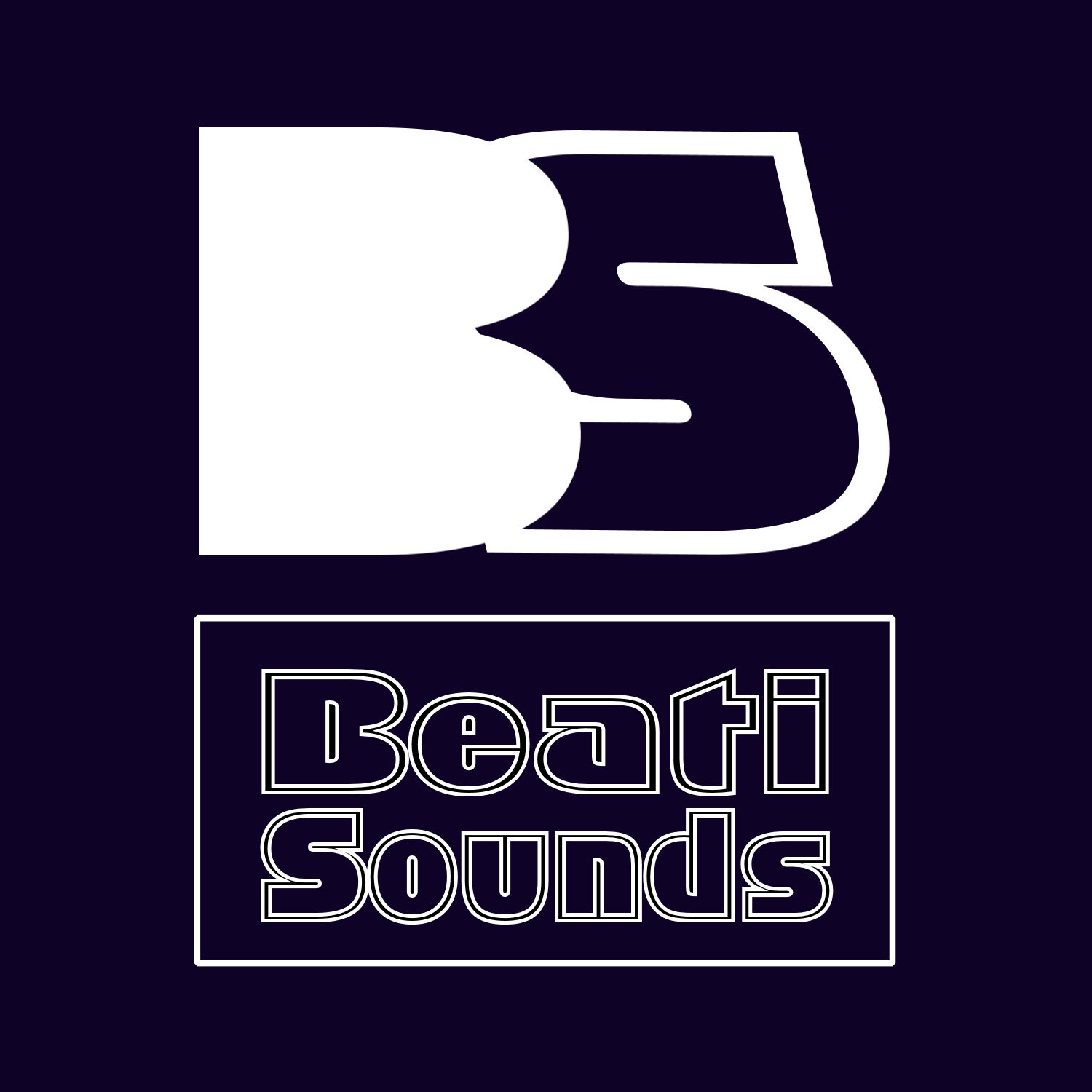


![Winter Beats – [Official] Videoclip by Beati Sounds](https://beati-sounds.com/wp-content/uploads/2016/02/WINTER-BEATS_final-768x768.jpg)



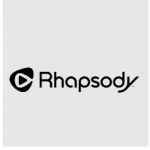


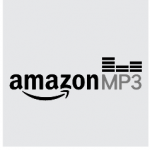
![Happy Whenever You Go Away – [Official] Videoclip by Beati Sounds](https://beati-sounds.com/wp-content/uploads/2016/01/Beati-Sounds-Happy-Whenever_006-Radio-Edit_001PMF-Section-1-mp3-image-768x768.png)



